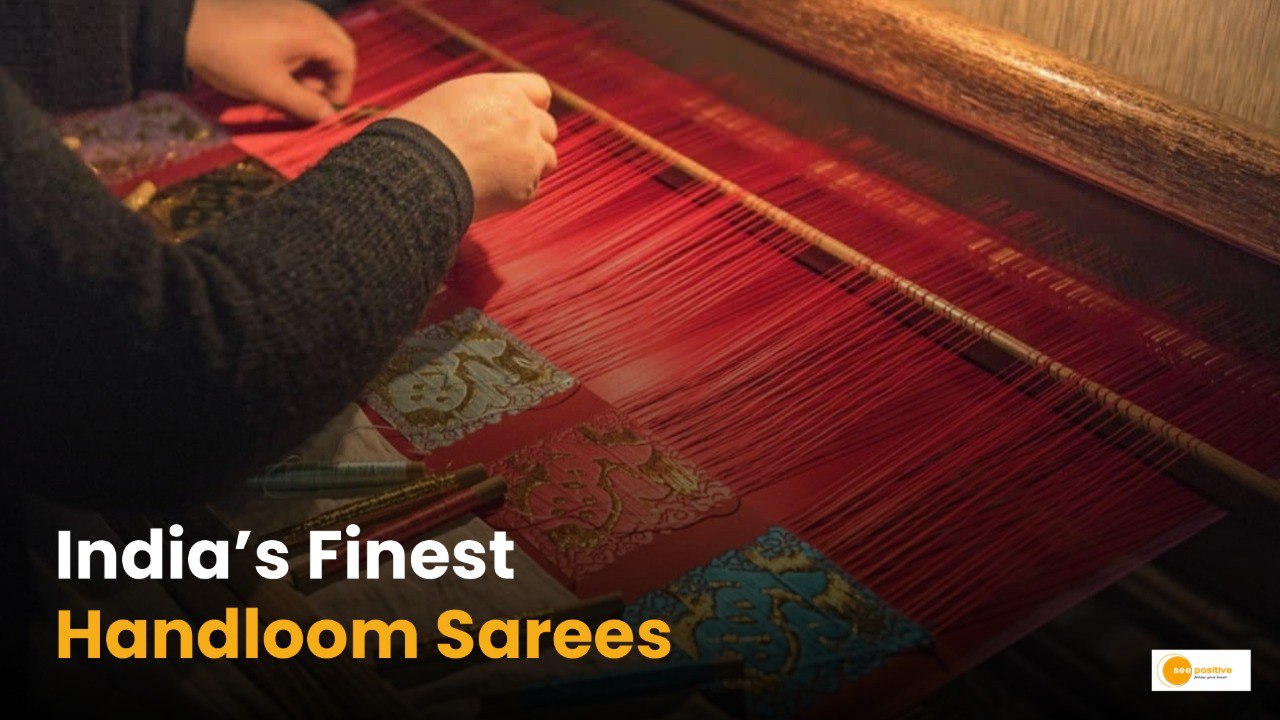India’s handloom sarees are more than just garments—they are a reflection of the country’s rich heritage, skilled craftsmanship, and timeless beauty. Woven with tradition, each handloom saree tells a unique story of its region, people, and culture. Whether it’s the intricate patterns, vibrant colors, or the time-intensive techniques used in weaving, handloom sarees are treasured by saree connoisseurs across the globe.
Here are the top 5 handloom sarees of India that continue to define elegance and cultural identity:
1. Kanjivaram Saree – Tamil Nadu
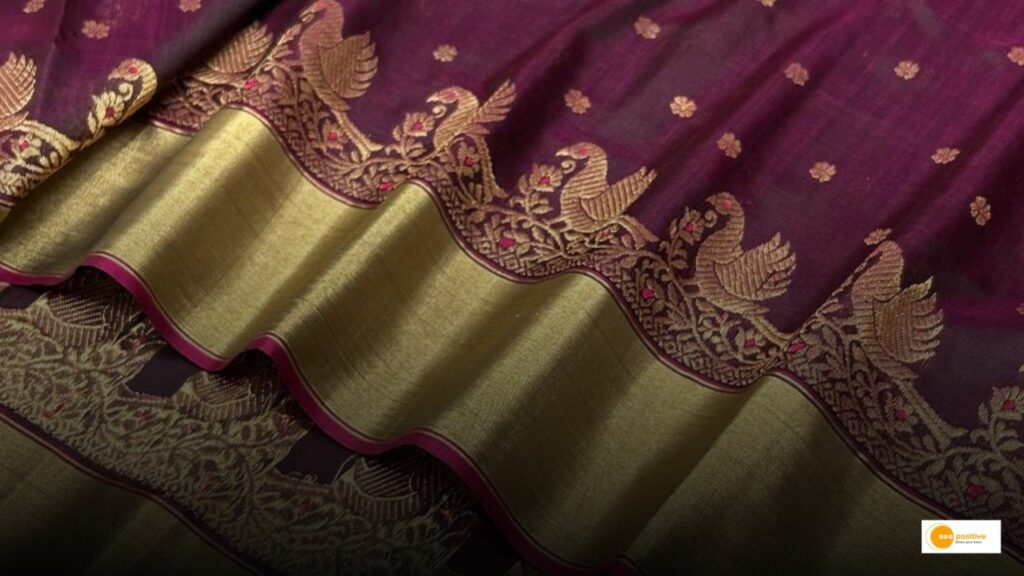
Origin: Kanchipuram, Tamil Nadu
Material: Pure mulberry silk with zari (gold or silver thread)
Key Features:
- Known for its rich texture, vibrant colors, and contrasting borders
- Traditional motifs like peacocks, temples, and flowers
- Often worn during weddings and festivals as a symbol of luxury
Why it’s special:
Kanjivaram sarees are considered the “Queen of Silks” in India. Each saree is handwoven and can take 7 to 15 days to complete, depending on the intricacy. The zari used in these sarees is real silver dipped in gold, making them not just beautiful, but valuable heirlooms.
2. Banarasi Saree – Uttar Pradesh
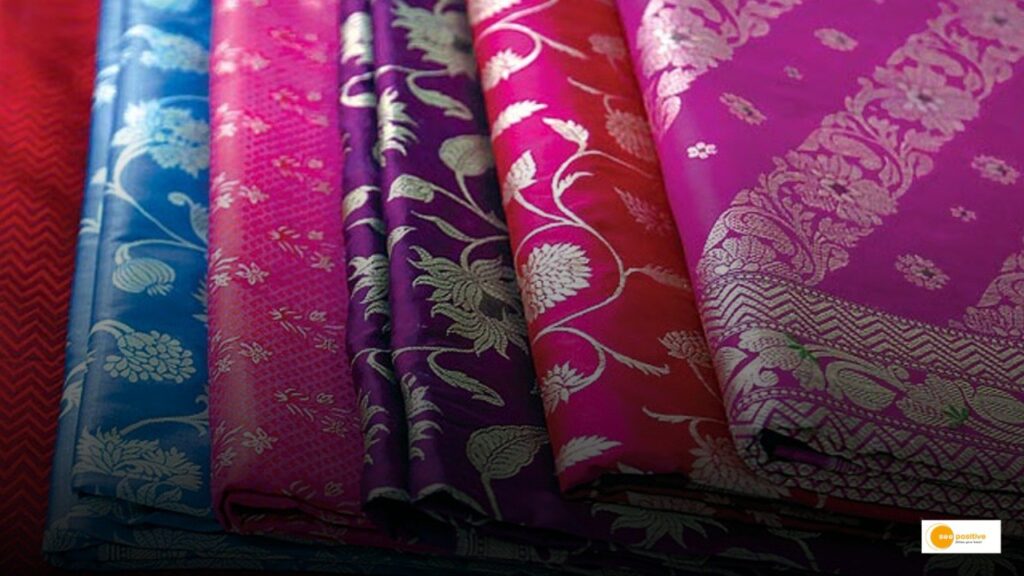
Origin: Varanasi (Banaras), Uttar Pradesh
Material: Silk, sometimes blended with cotton
Key Features:
- Heavy gold/silver brocade or zari work
- Intricate floral and Mughal-inspired motifs
- Compact weaving and fine craftsmanship
Why it’s special:
Banarasi sarees are synonymous with Indian bridal wear. Their rich appearance and intricate detailing make them a favorite for grand occasions. Many designs are inspired by Mughal art and architecture, giving the sarees a regal touch.
3. Chanderi Saree – Madhya Pradesh
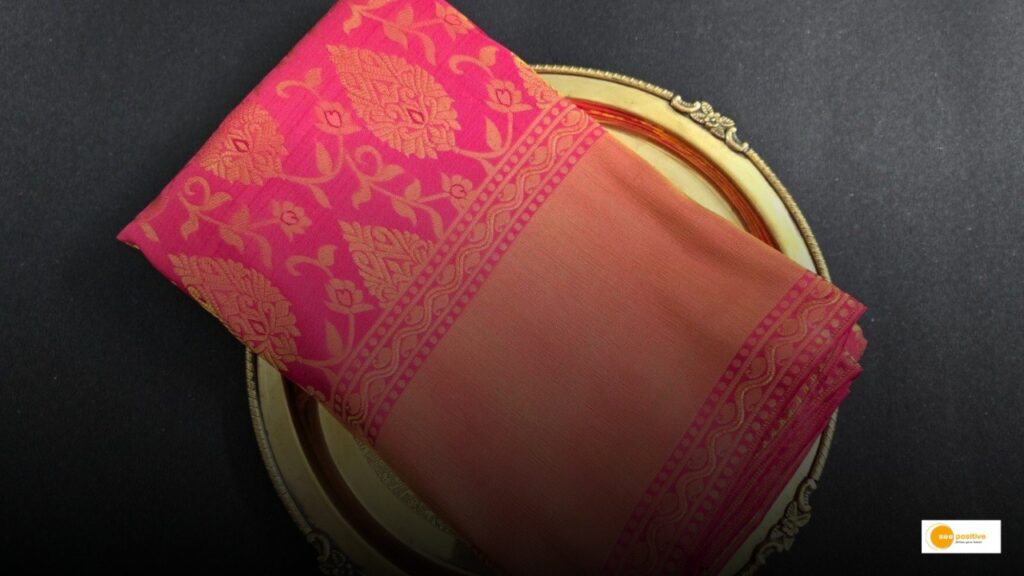
Origin: Chanderi town, Madhya Pradesh
Material: Silk, cotton, or silk-cotton blend
Key Features:
- Lightweight and sheer fabric with glossy transparency
- Traditional motifs like coins, peacocks, and floral art
- Elegant zari borders and soothing pastel shades
Why it’s special:
Chanderi sarees are known for their simplicity and sophistication. Ideal for summer wear and formal occasions, these sarees are a perfect blend of comfort and grace.
4. Patola Saree – Gujarat
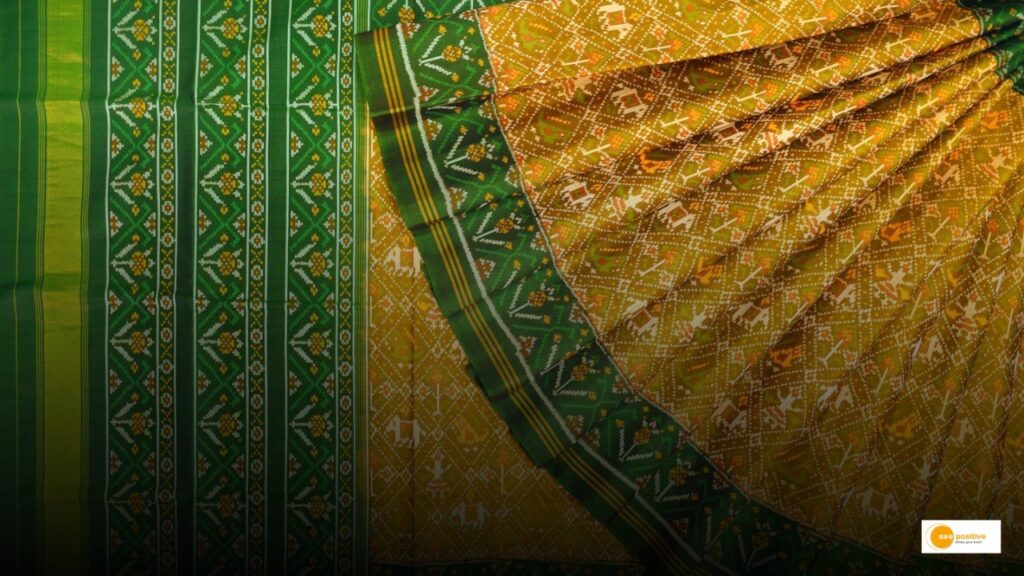
Origin: Patan, Gujarat
Material: Silk
Key Features:
- Double ikat weaving technique (dyed both warp and weft threads)
- Geometric patterns, animal motifs, and vibrant colors
- Extremely durable and reversible design
Why it’s special:
Patola sarees are a symbol of royal tradition and were once worn by aristocracy. The double ikat weaving method makes them one of the most complex and prized handloom weaves in the world.
5. Sambalpuri Saree – Odisha
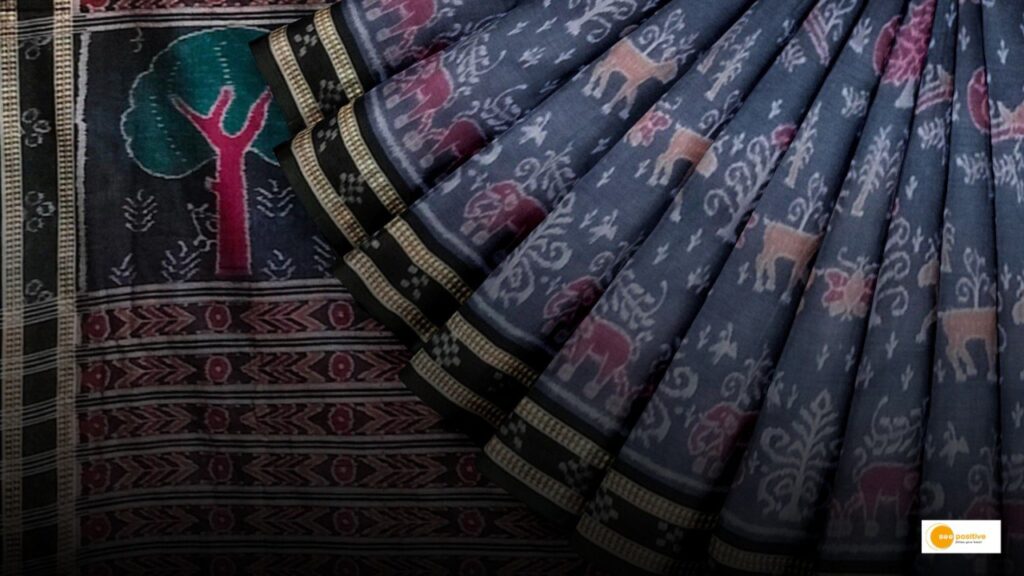
Origin: Sambalpur and surrounding regions, Odisha
Material: Cotton and silk
Key Features:
- Ikat-style tie-dye patterns
- Traditional motifs like shells, wheels, and flowers
- Bright earthy colors and unique tribal designs
Why it’s special:
Sambalpuri sarees combine artistic expression with traditional symbolism. They are comfortable, stylish, and hold cultural significance in Odisha’s festive and religious celebrations.
Draping Traditions
India’s handloom sarees are not just textiles—they’re living traditions passed down through generations. Each weave reflects the soul of its region and the hands that create it. By choosing handloom sarees, you’re not only embracing timeless fashion but also supporting artisan communities and sustainable practices.
You may also like: https://seepositive.in/health-wellbeing/from-the-heart-of-india-chhattisgarhs-gi-tagged-products/

